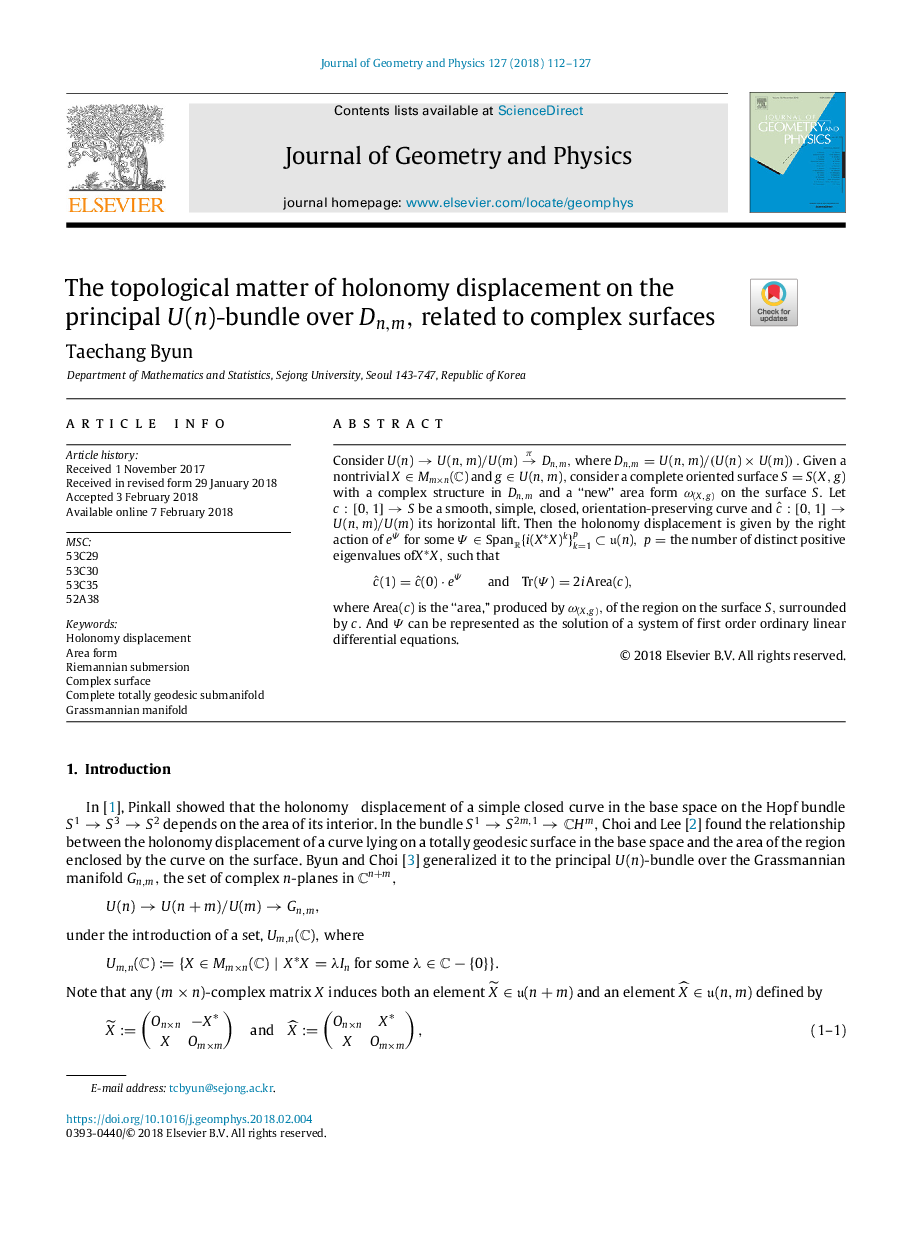| Article ID | Journal | Published Year | Pages | File Type |
|---|---|---|---|---|
| 8255628 | Journal of Geometry and Physics | 2018 | 16 Pages |
Abstract
Consider U(n)âU(n,m)âU(m)âÏDn,m, where Dn,m=U(n,m)âU(n)ÃU(m). Given a nontrivial XâMmÃn(C) and gâU(n,m), consider a complete oriented surface S=S(X,g) with a complex structure in Dn,m and a “new” area form Ï(X,g) on the surface S. Let c:[0,1]âS be a smooth, simple, closed, orientation-preserving curve and cË:[0,1]âU(n,m)âU(m) its horizontal lift. Then the holonomy displacement is given by the right action of eΨ for some ΨâSpanR{i(XâX)k}k=1pâu(n),p=the number of distinct positiveeigenvalues ofXâX, such that cË(1)=cË(0)â
eΨandTr(Ψ)=2iArea(c),where Area(c) is the “area,” produced by Ï(X,g), of the region on the surface S, surrounded by c. And Ψ can be represented as the solution of a system of first order ordinary linear differential equations.
Related Topics
Physical Sciences and Engineering
Mathematics
Mathematical Physics
Authors
Taechang Byun,
